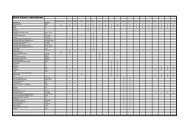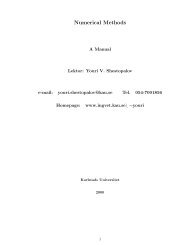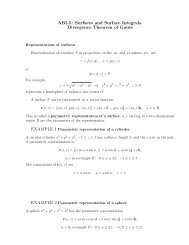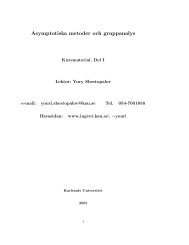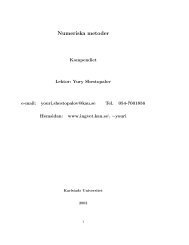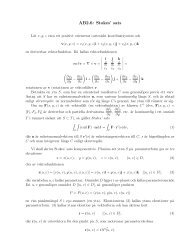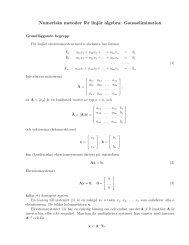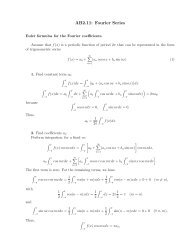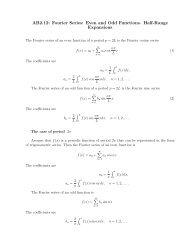You also want an ePaper? Increase the reach of your titles
YUMPU automatically turns print PDFs into web optimized ePapers that Google loves.
We see that T n and U n are polynomials of degree n.Let us breifly summarize some important properties of the Chebyshev polynomials.If |x| ≤ 1, the following convenient representations are validU n (x) =T n (x) = cos(n arccos x), n = 0, 1, ...; (321)1√ sin ((n + 1) arccos x), n = 0, 1, ... . (322)1 − x2At x = ±1 the right-hand side of formula (322) should be replaced by the limit.Polynomials of the first and second kind are coupled by the relationshipsU n (x) = 1n + 1 T ′ n+1(x), n = 0, 1, ... . (323)Polynomials T n and U n are, respectively, even functions for even n and odd functions for oddn:T n (−x) = (−1) n T n (x),U n (−x) = (−1) n (324)U n (x).One of the most important properties is the orthogonality of the Chebyshev polynomialsin the segment [−1, 1] with a certain weight function (a weight). This property is expressed asfollows:⎧∫1⎪⎨ 0, n ≠ m1T n (x)T m (x) √ dx = π/2, n = m ≠ 0 ; (325)−11 − x2 ⎪ ⎩π, n = m = 0∫ 1−1U n (x)U m (x) √ 1 − x 2 dx ={0, n ≠ mπ/2, n = m . (326)Thus in the segment [−1, 1], the Chebyshev polynomials of the first kind are orthogonalwith the weight 1/ √ 1 − x 2 and the Chebyshev polynomials of the second kind are orthogonalwith the weight √ 1 − x 2 .16.2 Fourier–Chebyshev seriesFormulas (325) and (326) enable one to decompose functions in the Fourier series in Chebyshevpolynomials (the Fourier–Chebyshev series),orf(x) = a 02 T 0(x) +Coefficients a n and b n are determined as followsa n = 2 π∞∑a n T n (x), x ∈ [−1, 1], (327)n=1∞∑f(x) = b n U n (x), x ∈ [−1, 1]. (328)n=0∫1−1dxf(x)T n (x) √ , n = 0, 1, ...; (329)1 − x260



